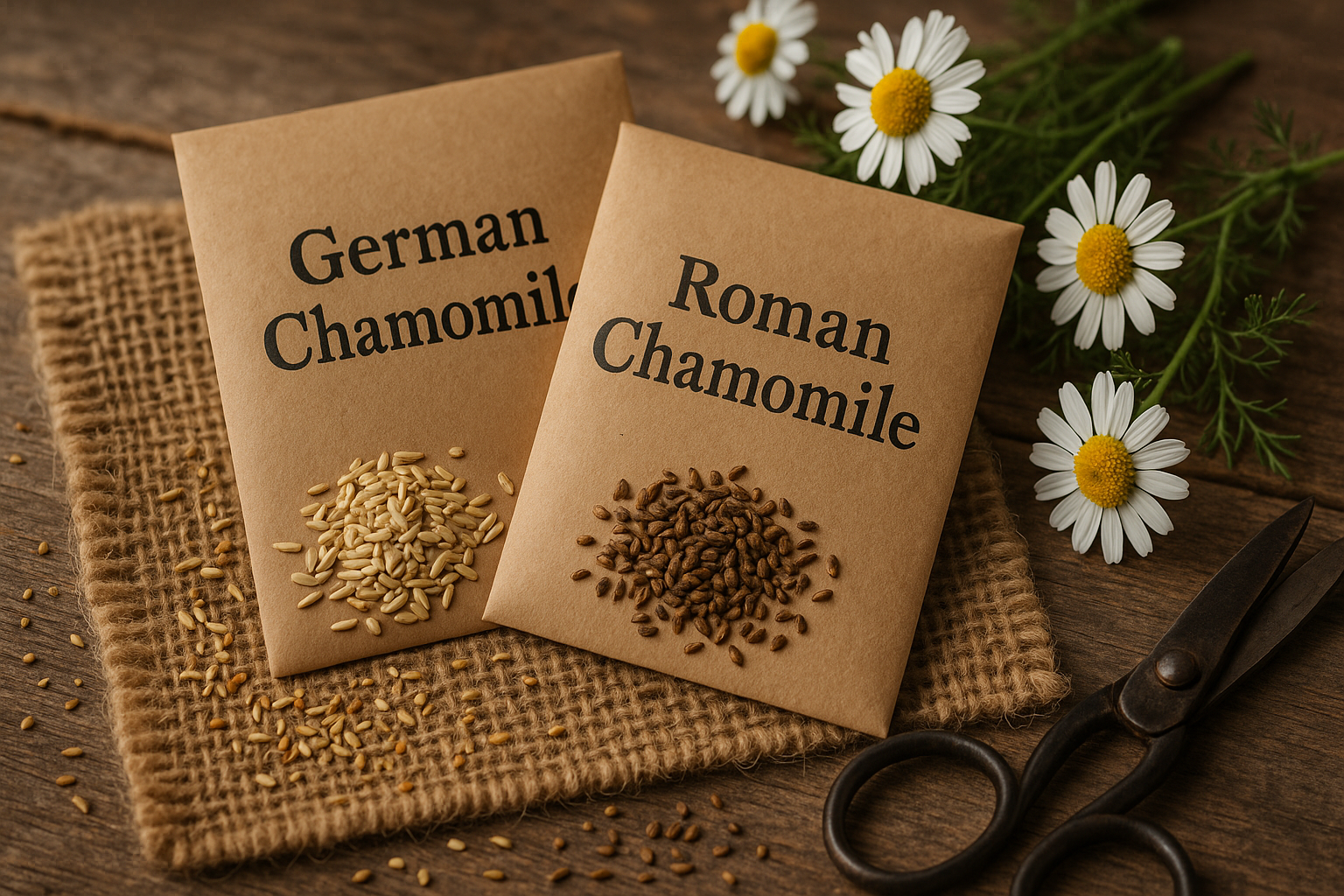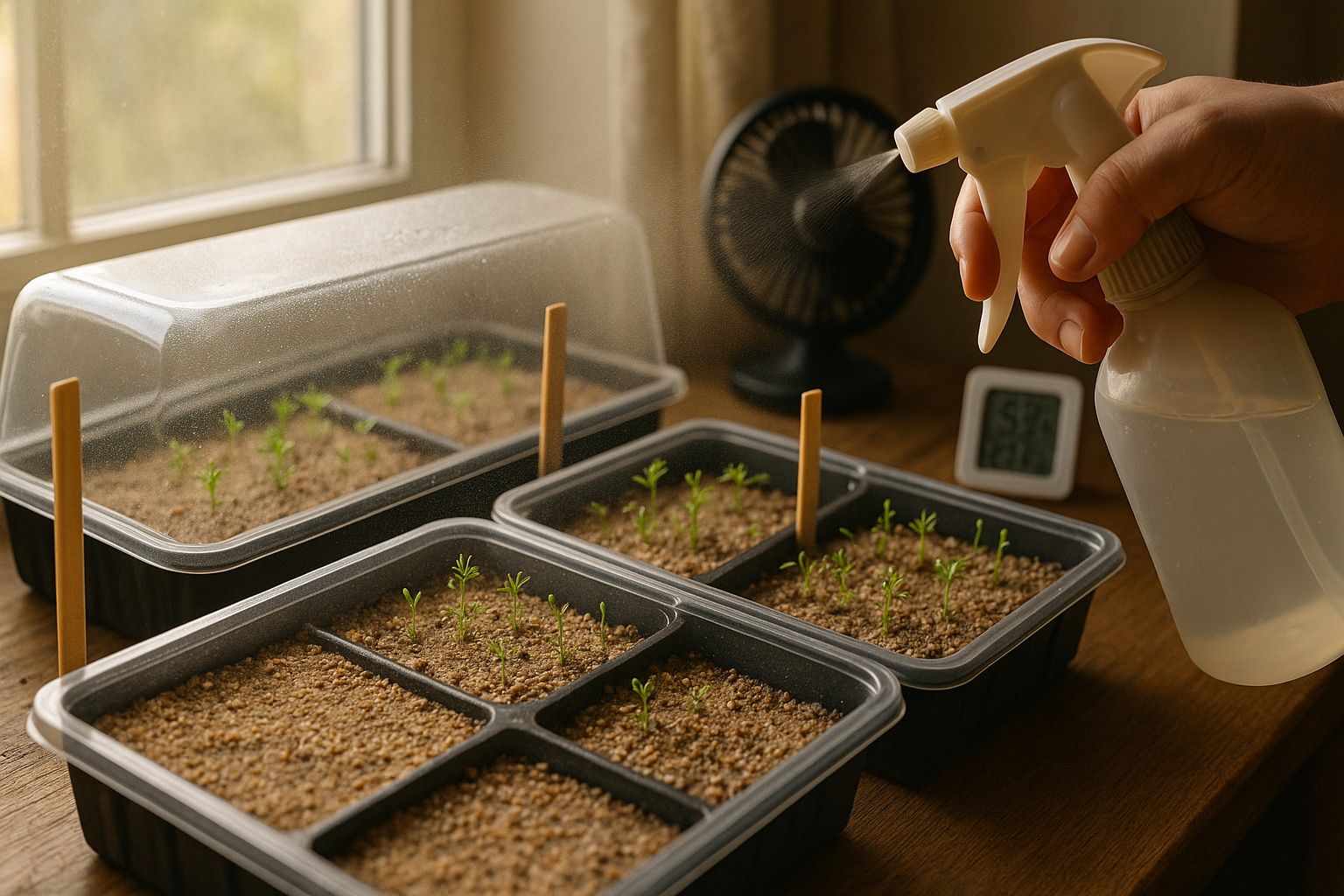Introduction to Growing Chamomile in Cold Climates
If you’ve ever wondered about growing chamomile during winter, you’re not alone. Chamomile is cherished worldwide for its calming teas and soothing medicinal properties, making it a must-have herb for any gardener or natural health enthusiast. Not only can a steaming cup of homegrown chamomile tea help you unwind after a long day, but the plant itself also boasts anti-inflammatory qualities that have been valued for generations.
Growing chamomile in winter, especially in cold climates, comes with its own set of challenges—like protecting tender seedlings from frost and selecting hardy varieties that can withstand chilly nights. However, these regions offer unique advantages too, such as fewer pests and slower disease spread, which can help produce healthier, more robust plants.
In this guide, you’ll learn practical tips for starting chamomile indoors, smart ways to insulate your garden beds, and even how to build easy DIY cold frames. Whether you’re an experienced gardener or a curious beginner, we’ll cover everything you need to ensure your chamomile thrives when the temperature drops, so you can enjoy its benefits year-round.
Choosing the Right Chamomile Variety

When deciding between German chamomile (Matricaria chamomilla) and Roman chamomile (Chamaemelum nobile) for your garden, especially if you live in a cold climate, it’s important to understand the differences in their hardiness. German chamomile is an annual that tolerates chilly conditions well and often self-seeds, making it a reliable comeback artist for colder zones. Roman chamomile, while a perennial, prefers milder winters; in USDA zones below 6, it may struggle without winter protection.
When sourcing seeds, prioritize brands known for quality and transparency about climate adaptability—look for terms like “cold-hardy,” “northern strain,” or “zone 4/5/6” on seed packets. Many reputable suppliers include a hardiness rating, germination time, and specific growing recommendations right on the label or online listing; always double-check this information before purchasing.
Reading customer reviews from gardeners in similar climates can be invaluable—for example, if northern growers found certain seeds thrived after a harsh winter, it’s a good sign for your own plot. Finally, don’t hesitate to contact seed companies directly to ask about their varieties’ performance in cold regions; most are happy to share what’s worked for customers like you.
Choosing the right chamomile type, paired with careful seed selection, boosts your chances of a healthy, fragrant harvest—even when temperatures dip.
Sowing Chamomile Seeds for Success

For the best results with chamomile, timing is key. Start seeds indoors about 6-8 weeks before your last expected frost; chamomile thrives when given a head start in cooler conditions. If you prefer direct sowing outdoors, wait until after the last frost when soil temperatures are consistently above 45°F (7°C).
Chamomile seeds are tiny and need light to germinate, so sow them on the surface of a well-draining, sandy or loamy seed-starting mix—don’t cover them with soil. Keep the trays in a bright spot but out of direct sunlight, and maintain consistent, gentle moisture with a spray bottle; the soil should be damp, never soggy.
Chamomile prefers temperatures between 65-70°F (18-21°C) for germination, and seeds should sprout within a week or two. Once your seedlings have at least two sets of true leaves and nighttime temperatures stay above 40°F (4°C), begin hardening them off.
Place the trays outside in partial shade for a few hours each day, gradually increasing exposure over a week. This step helps toughen up the seedlings to handle wind, sun, and fluctuating temperatures—crucial for transplant success.
Real gardeners find setting a timer or leaving seedlings near a frequently visited path helps remember to bring them in each night during hardening off. With a little attention to these details, you’ll set your chamomile plants up for a healthy, robust start in your garden.
Planting and Site Preparation in Cold Regions
Choosing the right spot for planting in cold regions is critical to success—look for areas that get full sun (at least six hours daily), since sunlight helps warm both air and soil, extending the growing season. Avoid low-lying spots where cold air can settle and create frost pockets; instead, site beds on gentle slopes or near south-facing walls, which radiate heat and create a beneficial microclimate.
Good soil drainage is essential because waterlogged soil in cold climates can lead to root rot, especially after snowmelt. To improve drainage and warmth, consider building raised beds—these warm up faster in spring and reduce the risk of water pooling around roots. Amend existing soil with organic matter like compost, well-rotted manure, or peat moss, which not only improves drainage but also boosts fertility and soil structure.
Before planting, loosen the soil down to 12-15 inches and mix in amendments generously across the bed. For most vegetables and perennials, plant seeds or transplants at the recommended depth for your crop—deeper is not always better, as it can slow emergence in cold soils.
Space plants a little farther apart than in warmer climates to allow for better airflow and sun penetration, both of which are vital for preventing damp, chilly conditions that foster disease.
Finally, protect young plants from late frosts by using floating row covers, cloches, or even old bed sheets on cold nights. Mulching with straw, shredded leaves, or pine needles helps insulate the soil, keeping temperatures steadier and moisture consistent. These strategies, paired with attentive site selection, will give your cold-region garden the best possible start each spring.
Chamomile Care Through the Seasons
Caring for chamomile year-round means adjusting your routine as the seasons change, especially when cold weather sets in. Watering is less frequent during fall and winter, as damp soil and cooler temperatures slow growth. Always check the top inch of soil before watering, and avoid soggy conditions that can cause root rot.
In early spring, work a balanced, slow-release fertilizer into the soil to support new growth. However, hold off on feeding as summer ends, allowing the plant to naturally harden off before winter. Mulching with organic materials like straw or shredded leaves in late fall helps insulate roots and stabilize soil moisture. Be sure to keep mulch a few inches away from the stems to prevent rot.
Cold, damp conditions can attract pests such as slugs and encourage fungal issues. Set up copper tape barriers for slugs and prune away any yellowing leaves to increase airflow around the base. If you notice mildew or leaf spots, remove affected foliage promptly and avoid overhead watering to minimize disease spread.
Pruning is also essential: in late winter or early spring, cut back dead or straggly growth to just above a healthy leaf node to stimulate bushy, robust plants. Throughout the growing season, regular deadheading—pinching off spent blooms—encourages more flowers and reduces the risk of disease by removing decaying plant material.
By keeping these seasonal care steps in mind—watering only as needed, mulching for root protection, feeding before the main growth burst, and staying vigilant about pests, pruning, and disease—you’ll help your chamomile thrive through every change in weather.
Overwintering and Protecting Chamomile
Overwintering chamomile ensures your plants survive and thrive for another blooming season. Start by pruning your chamomile in late autumn—once the flowering is done, trim stems back to about 2–3 inches above the soil. This keeps the plant tidy and minimizes the risk of harboring pests or diseases over winter.
Next, mulch around the base using straw, leaves, or wood chips. A 2–3 inch layer helps insulate the roots from harsh temperature swings. In areas with particularly cold winters, cover your chamomile with a breathable frost cloth or garden fleece, especially during frosty nights—just be sure to secure the edges so the wind doesn’t blow it away.
For potted chamomile, move containers indoors to a cool, bright spot like an unheated sunroom or garage, but water sparingly to avoid root rot. Check periodically for signs of frost damage: wilting, blackened foliage, and mushy stems. If you spot any, prune back affected parts immediately to prevent the spread of rot.
In mild climates, chamomile often survives winter outdoors with minimal protection, but if you’re unsure, a little extra care goes a long way. Make it a routine to inspect your plants after cold snaps.
When new growth appears in spring, remove mulch and prune any remaining dead stems to encourage a healthy, bushy plant ready for another prolific season.
Harvesting and Using Chamomile
Harvesting chamomile at the right time ensures the freshest flavor and highest potency from your flowers, especially in northern climates with short, cool summers. Aim to pick chamomile blooms in the late morning, after the dew has dried but before the sun gets too hot—usually from late June through August.
Look for flowers whose white petals are fully open and still lying flat, as this is when their essential oils are at their strongest. Snip flowers just below the flower head with garden scissors or pinch gently with your fingers. Collect only fully open blossoms, leaving buds to mature for later harvests.
To dry chamomile, spread the flowers in a single layer on a clean screen or paper towel in a well-ventilated, shaded area—good air circulation is key to preventing mold. Once the blossoms feel crisp, usually after a week, transfer them to airtight glass jars. Store the jars in a cool, dark cupboard to maintain their soothing compounds for up to one year.
Homegrown chamomile is incredibly versatile:
- Steep 1-2 teaspoons of dried flowers in hot water for a calming herbal tea.
- Infuse the petals into carrier oils like olive or almond for skin-soothing salves.
- Blend into homemade bath soaks to ease tension.
Chamomile’s gentle properties make it a staple in natural home remedies, perfect for calming upset stomachs, easing stress, or supporting restful sleep.
